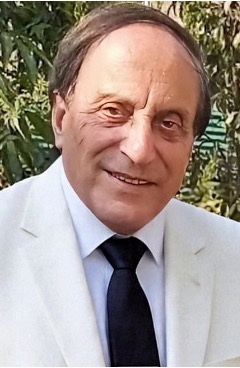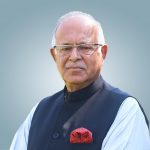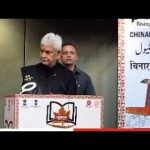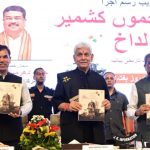Medical historians are quite certain that prehistoric people had no concept of public health, though they had health problems just as we do today. Their lifestyles and lifespans meant that diseases would have been different from those we have now. Prehistoric people used medicinal herbs and other natural substances as medicine, as limited evidence suggests.
The history of hospitals began before the Middle Ages in many parts of the world, including Greece and Rome. Initially, some places of worship were dedicated to the sick.
Several early cultures developed institutions to care for the ill. The Greeks started with temples where the sick sought divine and natural cures. Christians believed that on the last day, God would judge people according to the love they had shown to those in need. In this regard, many local missionaries in Europe assisted the unfortunate and uncared-for. Over the centuries, Christians in many parts of the world developed hospices and later more specialized hospitals for the sick and needy. Early hospitals were financed by the revenue from lands donated by local priests.
Medieval Islamic society maintained hospitals known as “Bimaristan,” often contracted to “Maristan,” from the Persian word “Bimar,” meaning “ill person.” The first known Islamic care center was a tent set up by Al-Aslamiyah during the lifetime of Prophet Muhammad (PBUH) during the Battle of the Ditch (GhazwahKhandaq). She treated the wounded in a separate tent erected for them. The first Islamic hospitals were founded in Baghdad, Iraq, during the reign of Khalifa Haroon Al Rashid (786–809). According to a governor of the caliph, Islamic hospitals had become common by the 820s, and Muslims subsequently considered supporting hospitals a mark of true piety.
After the Muslims conquered Sassanid Persia in the 7th century, they were impressed by Nestorian medical skills and adopted many Syrian medical traditions, teaching methods, scientific texts, and hospitals as models for their own institutions. Although Islamic hospitals evolved from Christian institutions, they had a unique development. They differed strikingly from their counterparts in Istanbul by including separate sections for mental patients.
Gradually, the psychiatric wards became the most prominent feature of these hospitals. Islamic hospitals served several purposes: a center for medical treatment, a convalescent home for those recovering from illness, and a retirement home providing basic care for the needy. All Islamic hospitals were mostly financed by the revenue from pious bequests called waqfs.
Kashmir Hospitals
The idea of building a hospital in Srinagar occurred to the British in 1865. Dr. William J. Elmsile, who died at the young age of 42, was unable to get accommodation for his proposed hospital in Srinagar because both the ruler and his subjects were strongly against the idea. Sensing the mood of the people and the government, Dr. Elmsile began treating patients in a tent. It was an uphill task, but he slowly gained the confidence of both patients and the public. Under pressure from influential British officials, Maharaja Pratap Singh finally allotted land for a public hospital on the hilltop of Rustom Gari Drugjun (Dalgate), Srinagar.
Dr. Theodore Maxwell, Dr. Elmsile’s successor, worked tirelessly in the hospital, and later, thanks to the personal efforts of another British doctor, Edmund Downes, the first mission hospital building was constructed on Drugjun hill. It is worth noting that the renowned Kashmiri physician, the late Dr. Ali Jan Fazilli, served in this hospital twice after finishing his medical graduation, as told by his nephew, Rauf Fazilli.
Encouraged by this success, missionaries became very interested in continuing hospital work elsewhere in the Kashmir valley. Sir Francis Younghusband, a British resident commissioner in Srinagar, wrote in his 1908 book, Kashmir as it Was, about the hospital of Dr. Neve. He said, “Conspicuous above the European quarter stand the group of buildings known all over Kashmir as Dr. Neve’s Hospital and Mission Hospital which with Mr. Biscoe’s school is the most sincerely appreciated of all the efforts which Europeans have made for the Welfare of the Kashmir people.
Last year no less than 22,735 new outpatients were treated and the total number of visits amounted to 256,280. 1,764 inpatients, of whom 476 were females, were also treated; and 5,038 surgical operations were performed. Sometimes over 200 outpatients, and on a few days over 300 outpatients, were treated in a single day. These figures speak for themselves. They show the confidence the people now have in this wonderful institution, and the steady practical good it is doing. The heads of the hospital are the brothers Doctors Arthur and Ernest Neve, and they are assisted by Dr. Rawlence, Miss Nur Nevi, Mr. Robinson, Mr. S. Wilson, and 54 native assistants and servants.”
The hospital was founded in 1865 by Dr. Elmsile, who faced a long struggle to start the institution but eventually gained the confidence of the people and the late Maharaja. Dr. Downes succeeded Dr. Elmsile and carried the work forward. In 1881, Dr. Neve took it up. In that year, 10,800 new patients were treated, there were 23,393 visits, and 1,418 operations were performed. Year by year since then, the good work has progressed.
The original mud buildings have gradually been replaced by the present solid masonry structures, and the steady growth of the number of inpatients and the readiness with which upper-class women remain in the hospital testify to the confidence the institution is now regarded with. It is now renowned throughout the north of India and is a splendid testament to the steady, thorough, and persevering work of two self-sacrificing men.
Sir Walter R. Lawrence, in his book The Vale of Kashmir (1895), wrote, “It is only of late years that the Kashmiris have begun to recognize the benefits of the western system of treatment, and the growing belief in the efficacy of the European methods is due to the devotion and skill of the medical missionaries in Kashmir. Even now the mass of the people believe in their own doctors, many of whom are men of considerable ability and experience”.
There are 300 hakims or doctors in Kashmir, and as a rule the profession is hereditary. Their system is based on the Greek system of medicine, and I have known cases in which some of my subordinates have derived great benefit from the skill of a Kashmiri Hakim. Once when I was in great anxiety, a deputation of Kashmiris begged me to allow a well-known Hakim to treat my son. They argued that this Hakim had never failed to cure the disease.”
Over the years, missionaries extended their medical services. An exclusive hospital for leprosy patients was established in 1891 on the peripheral banks of Nigeen Lake in the Baghwanpora area of Srinagar. Both the government and the Church of missionaries managed the hospital. In 1892, the John Bishop Memorial Hospital was rebuilt in the town of Islamabad on land allotted by the government at the request of the comander-in-chief of the British army, after the earlier building was damaged by floods.
Five years later, in 1897, a “Zenana” (women’s) hospital at Nawakadal was constructed to celebrate 60 years of Queen Victoria’s rule. A special ward for obstetrics and gynecology was shifted from the state hospital in Hazuri Bagh. The hospital has since been closed and now houses a Government College for Women.
Earlier, the Church of England’s (Zenana) Women’s Missionary Society hospital was established in Rainwari within the same campus as Dr. Neve’s hospital, which had been functioning since 1865. The hospital has undergone a total revival and is now a super-specialty hospital serving hundreds of patients daily. Seeing the selfless work of E.M.N., Tyndale Biscoe bestowed the title of “the Florence Nightingale of Kashmir” upon her.
Decades later, St. Joseph’s Hospital was started in 1921 by Franciscan missionaries in Baramulla, Kashmir. Eight years later, in 1929, a sanatorium for tuberculosis patients was established at Tangmarg. Subsequently, the government decided to improve the healthcare system in Kashmir and approved the construction of a major hospital in the heart of Srinagar. The estate of the Hadow carpet factory was acquired for this purpose.
Mr. Marquis of Linlithgow, the then Viceroy of India, laid the foundation stone on October 15, 1940, and the hospital was finally inaugurated by his successor, Lord Wavell, on October 11, 1945. Over the years, the State hospital has added a number of medical faculties. The first medical college was set up nearby and is associated with the hospital, commonly known as Hedowun hospital.
The British arguably left a decent healthcare delivery framework when they departed. Over the years, a lot of progress has been made in health services in Kashmir. Recently, many new medical colleges have been established in some districts of the Kashmir province. The prestigious Sher-i-Kashmir Institute of Medical Sciences at Soura, now a deemed university, has been functioning dedicatedly since 1982, providing excellent patient care. The exclusive women’s hospital, the “Ladled,” is getting hundreds of new admissions daily, and the children’s hospital at Sonwar, Srinagar, offers excellent patient care.
The Government Psychiatric Hospital, housed in the barracks of the Central Jail Srinagar at Botraj colony, Badamwari, Srinagar, is doing a commendable job treating mentally ill patients. There are also many other colleges that have been established in both the private and public sectors, such as the Government Dental College at Shireen Bagh, Kaksarai, Srinagar, which was established in 1985/86.
Two government-recognized colleges of Indian systems of medicine offer five-year courses to students wanting to pursue alternative medicine. A nursing college and a few paramedical colleges have also been established. There is no doubt that we still have a long way to go before we can assure quality health to all our people.
(Author is a columnist and can be reached at: [email protected])










